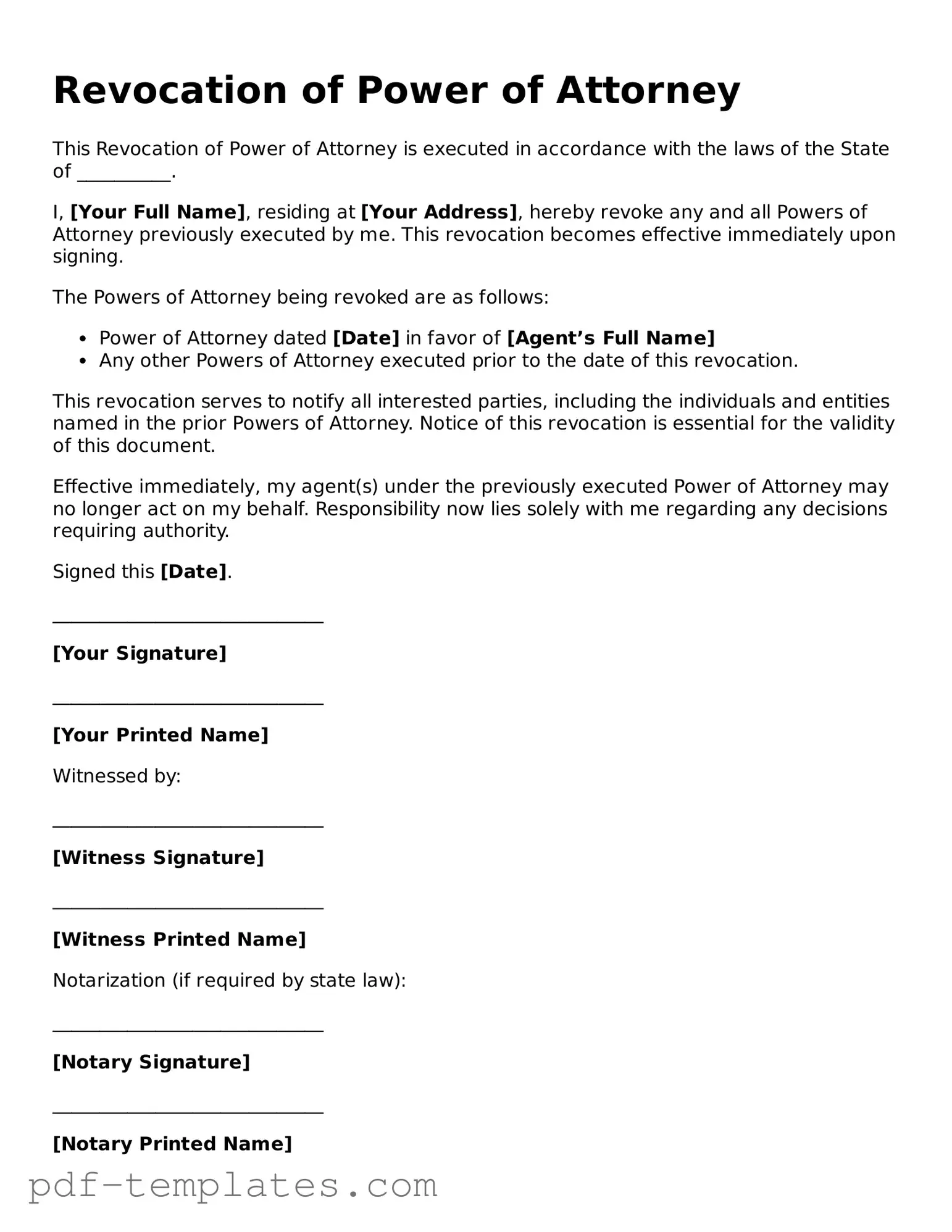The Revocation of Power of Attorney form shares similarities with the Durable Power of Attorney document. Both forms are essential in the realm of legal authority and decision-making. While the Durable Power of Attorney grants an agent the authority to act on behalf of a principal, the Revocation serves to nullify that authority. This ensures that any prior decisions made under the Durable Power of Attorney are no longer valid, allowing the principal to regain control over their affairs.
Another document akin to the Revocation of Power of Attorney is the Limited Power of Attorney. This form provides specific, restricted powers to an agent, often for a particular task or time period. Like the Revocation form, it can be terminated at any time by the principal. When the principal decides to revoke the Limited Power of Attorney, they effectively communicate that the agent no longer has the authority to act on their behalf, thus ensuring their intentions are clear.
When considering the comprehensive management of one’s personal and financial affairs, understanding the nuances between various legal documents is crucial. For instance, while the Revocation of Power of Attorney effectively terminates the authority granted to an agent, individuals may also benefit from other forms like the Durable Power of Attorney, which ensures continuity in decision-making even during incapacity. Resources such as topformsonline.com can provide valuable information on these forms, helping individuals navigate their options for future planning.
The Healthcare Power of Attorney is also comparable to the Revocation of Power of Attorney. This document specifically designates an individual to make medical decisions for someone who is incapacitated. If the principal wishes to revoke this authority, they can use a Revocation form to ensure that their healthcare decisions are no longer influenced by the previously appointed agent, thus restoring their autonomy over medical choices.
A similar document is the Springing Power of Attorney. This type of Power of Attorney only becomes effective under certain conditions, typically when the principal becomes incapacitated. The Revocation of this document can occur when the principal regains capacity or simply wishes to change their designated agent. Both documents emphasize the principal’s control over when and how authority is granted and can be revoked.
The Living Will is another document that aligns with the Revocation of Power of Attorney. While a Living Will outlines a person's wishes regarding medical treatment in end-of-life situations, the Revocation form allows individuals to change their previously appointed agents who may carry out those wishes. If the principal decides to revoke their agent's authority, they can ensure that their healthcare preferences are respected according to their current desires.
Additionally, the Trust document shares some similarities with the Revocation of Power of Attorney. A Trust allows individuals to manage their assets and designate a trustee to handle those assets. If the principal wishes to revoke the authority of a trustee, they can do so through a formal revocation process. This ensures that the management of their assets aligns with their current intentions and preferences.
The Assignment of Benefits form also has a parallel structure to the Revocation of Power of Attorney. This document allows individuals to assign their rights to benefits, such as insurance claims, to another party. If the principal decides they no longer wish to assign these benefits, they can utilize a revocation form to terminate that assignment, thereby regaining control over their benefits and who can access them.
Another related document is the Consent to Release Information form. This form permits a third party to access personal information, often for medical or financial purposes. Similar to the Revocation of Power of Attorney, the principal can revoke this consent at any time, ensuring their privacy and control over who has access to their information remains intact.
Lastly, the Quitclaim Deed is comparable in that it allows a property owner to transfer their interest in a property to another party. If the property owner decides to revoke this transfer, they can do so through a revocation process. This ensures that the ownership of the property reflects the current intentions of the owner, similar to how the Revocation of Power of Attorney clarifies the principal's current wishes regarding authority.
